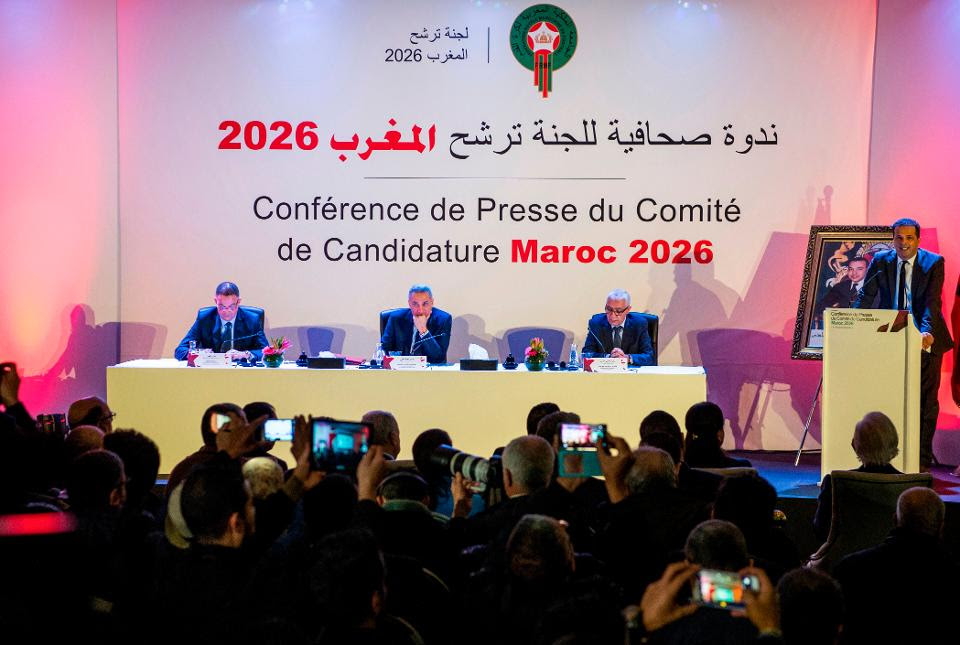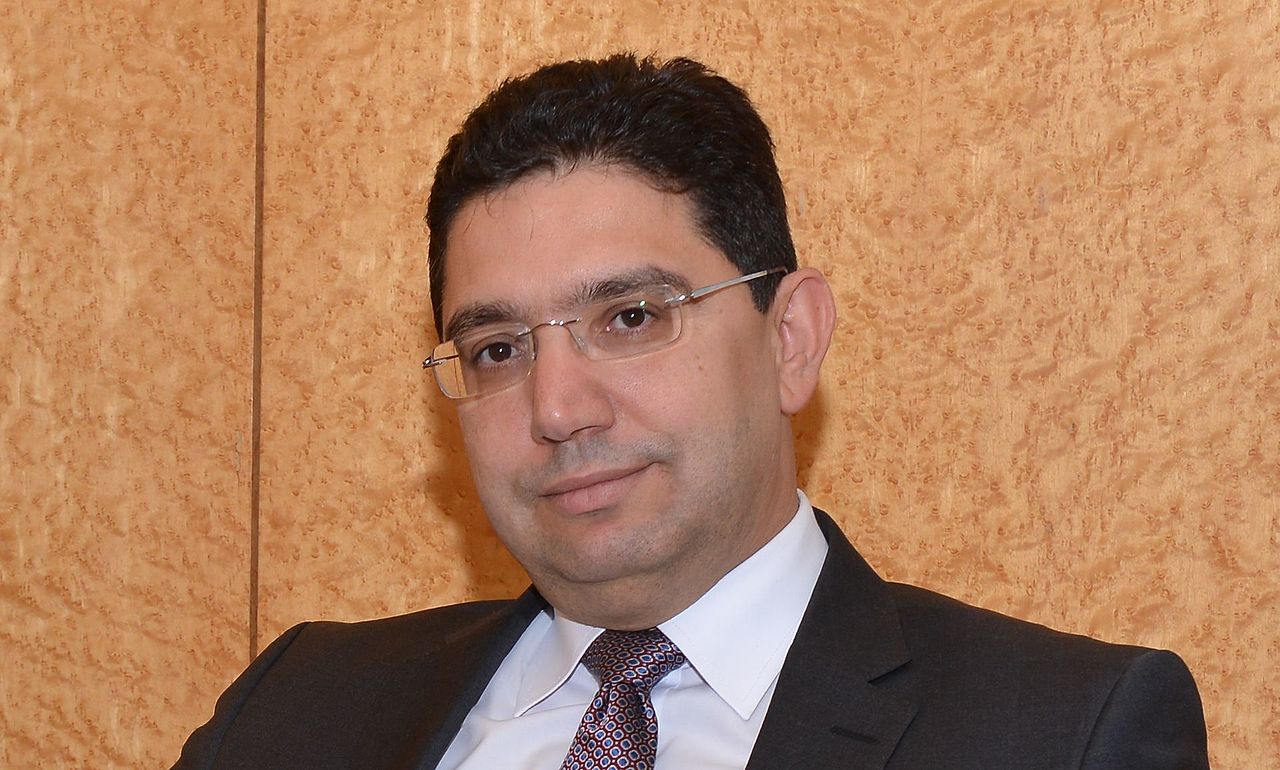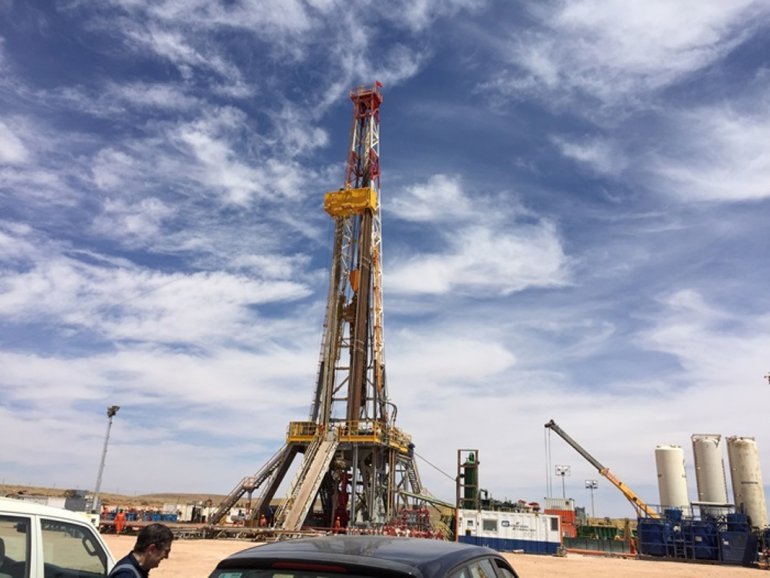Forbes
FADEL SENNA/AFP/Getty Images
Fouzi Lekjaa (L), President of the Royal Moroccan Football Federation (FRMF), Moulay Hafid Elalamy (C), chairman of the Moroccan Committee bidding for the 2026 World Cup, and Moroccan Youth and Sport Minister Rachid Talbi Alami (2nd-R) give a press conference in Casablanca on January 23, 2018, presenting their country’s pitch to host the 2026 competition.
Attractive destinations, short travel times between venues, and perhaps most importantly, a time zone that falls smack-bang in the middle of where FIFA makes the majority of its TV rights revenues—Morocco’s 2026 World Cup bid looks pretty strong.
When Morocco first said it wanted to host the 2026 World Cup, many North American pundits were dismissive. The Morocco bid was light on details, leading to some people questioning whether the North African nation was serious about wanting to host the global soccer tournament (despite Morocco attempting to host the World Cup on four previous occasions).
Now those details are out, and while Morocco can’t offer everything that North America’s United 2026 bid can, it certainly has a lot going for it.
Critics may point to Morocco’s size, claiming it is not big enough to host a 48-team tournament. But Qatar is hosting a 32-team World Cup, and Morocco is around forty times the size, and has fourteen times the population of the Gulf state. Morocco’s bid tries to portray its size as an asset. After the mammoth flights of Brazil 2014 and Russia 2018, Morocco is offering a compact World Cup , so that players and fans can spend less time traveling and more time focusing on the soccer.
For fans, the host cities have been chosen to offer a unique authentic experience, with the bid package highlighting tourist sites nearby, from the markets and palaces of Marrakesh to the Portuguese architecture of El Jadida, or the golden beaches of Agadir on Morocco’s Atlantic coast.
The expense of traveling to and around recent World Cup host countries has made it difficult for average fans to enjoy the competition in the past, but Morocco claims a World Cup there will be affordable for supporters.
Morocco is a relatively safe destination. Millions of tourists travel there every year and it has only suffered one terrorist attack in the past ten years, an attack on Marrakesh that left 17 wounded, although recent violence at a soccer match in Marrakesh shows that, like most countries, Morocco isn’t without its problems.
But the part of the bid package that’s most damaging to North America’s bid is that Morocco falls in the same time zone that makes London such an attractive financial center. All of Europe and Africa will be able to watch all of the games, and fans in the Americas and Asia will be able to watch some games at a reasonable hour.
The main case for United 2026 is that it’s a safe choice that’ll fill FIFA’s coffers. Morocco has tried to make the case that it too is going to bring FIFA big rewards for relatively little risk.
Unlike North America, which has hosted three world cups (albeit none in the past twenty years), North Africa is a new territory for FIFA; the only other world cup in Africa was right at the other end of the continent.
When it comes to legacy, North America falls short. Both Mexico and the USA have already hosted a world cup, and without a change in the U.S. system away from the closed-shop Major League Soccer, it is unclear how much hosting the World Cup will grow the sport within the USA. The problems with the North American Soccer League recently won’t help the North American bid’s cause in that respect.
Morocco’s bid still has weaknesses—its infrastructure is still a long way behind North America, and while North America has more than enough large modern stadiums ready to host the tournament tomorrow, Morocco still needs to construct seven stadiums for the tournament.
But the host won’t be decided by whose bid is best on paper. As long as both bids are viable, the vote will be decided by who FIFA’s member countries prefer. And recent news on that front doesn’t look good for North America , with suggestions that Morocco may be the more popular bid.
That isn’t surprising. Morocco is likely to receive votes from Africa and perhaps the Middle East whereas North America will probably get most of the votes from the rest of the Americas unless those countries are planning a protest vote for Morocco out of revenge for the U.S. role in the FIFA corruption investigation as ESPN claims. That leaves Europe and Asia as the ‘battleground states’ in this election. It’s been generally assumed that Europe would back North America, but due to proximity and time difference, Morocco is better for European fans. For Morocco to win over Europe’s soccer associations, it will have to convince Europe that Morocco also benefits European teams. England, for example, could prepare for Morocco at its own training ground in Derbyshire and still have shorter flights than if the World Cup were held in North America. But even if Morocco is better for European fans and players, the might of the North American economy could help get countries to back North America’s bid, if United 2026 can get strong political backing from the governments of Canada, the U.S., and Mexico.
For North America to beat the Morocco bid, it has to show how it can benefit other nations, rather than just how it can be profitable for FIFA. Carlos Cordeiro, shortly after being elected head of the United States Soccer Federation, said how the World Cup bid was his top priority. But rather than it being a foregone conclusion, he will have to fight for every last vote for North America to win the right to host the 2026 World Cup.





